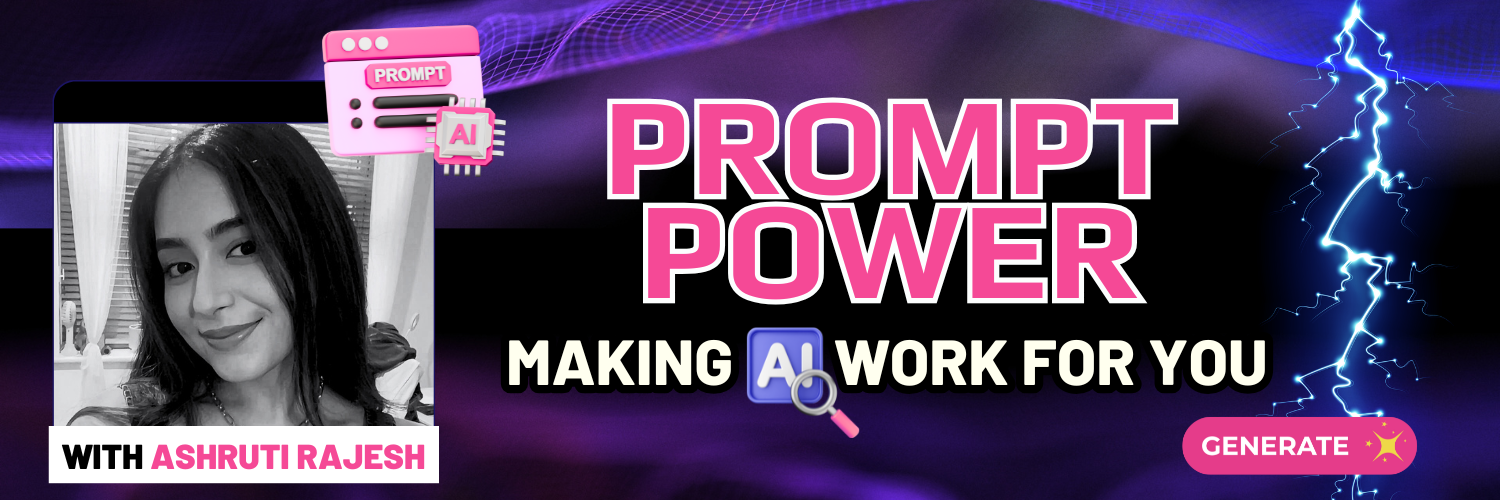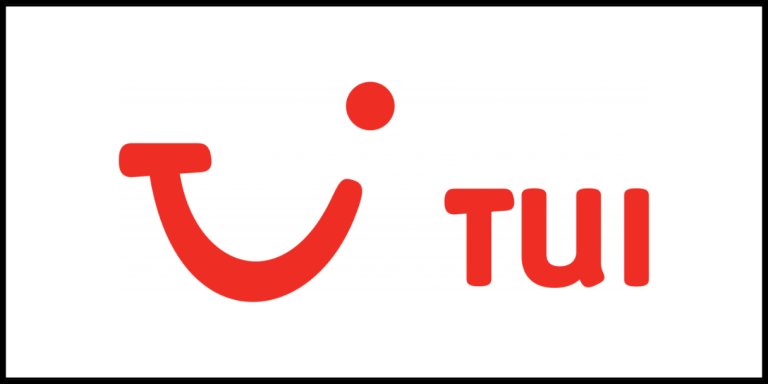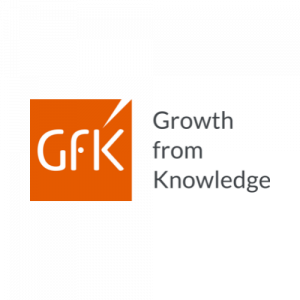
Content Menu
mastering AI PromptS for Smarter, Faster Results
Hi, I’m Ashruti! My journey into tech began as a career-switcher with a humanities background, drawn to the idea that technology can open doors rather than close them. Through Data Analysis training with Code First Girls, I built the foundation that led to my current role as a Data Analyst at Tasman Analytics, a data consultancy that excels in turning disorganised data into actionable business insights.
Through my time with both Code First Girls and Tasman Analytics, I’ve seen how vital it is to adapt to emerging tools, and how easy it is to feel behind. Recent research from Harvard Business School found that women are adopting AI tools like ChatGPT at significantly lower rates than men. This gap matters. AI isn’t just a buzzword, it’s rapidly becoming a core skill that shapes how we work, learn and solve problems.
The good news is that with a bit of confidence and curiosity, anyone can learn to use it well.
Why Learning AI Prompts Matters
Knowing how to write a good AI prompt isn’t just helpful, it’s empowering. It boosts productivity, unlocks creativity and gives you a sharper edge in everything from analysis to content creation. Whether you’re a total beginner or looking to improve your results, this guide will help you get more out of tools like ChatGPT, Claude and Gemini.
The digital revolution of recent years has redefined almost every aspect of modern life. At the heart of this transformation is artificial intelligence (AI), which has become a dominant force in today’s tech landscape. With AI clearly here to stay, the big question is: ‘how can we harness its power to work for us?’
Large language models (LLMs) developed by OpenAI, Anthropic, Google and others rely on human input. We’re already seeing this at scale with 71% of organisations now use generative AI in at least one area of their business. That brings us to a more refined question: “are we just writing prompts, or are we engineering them?”
As someone who’s experienced the transformative power of AI on day-to-day tasks, I believe the skill that truly unlocks its potential is effective communication. Being able to “speak AI” is quickly becoming as valuable as any technical skill.
What is ‘AI Prompt Engineering’?
Put simply, AI prompt engineering is the art of crafting clear, specific instructions that get meaningful results from AI models. Think of it like learning to speak a language. You might start with “I’m hungry”, but with fluency you might say “I’m hungry for grilled salmon with roasted vegetables and a dash of lemon.” Both get a response, but one gets you exactly what you’re looking for.
Just like learning a language, prompt engineering is about tone, context and clarity. A beginner might write, “Write SQL to help with database analysis”, while someone more fluent would say, “Write a SQL query that finds all customers who haven’t ordered in 6 months, includes their contact info, and is optimised for performance on a 2M-row table.”
Both are valid, but one delivers a better solution.
At its core, prompt engineering blends creativity with systematic thinking. You don’t need a coding background, just the ability to:
📌 Understand how AI processes information
📌 Structure your requests clearly and specifically
📌 Iterate and refine based on results
📌 Apply context and constraints to guide the AI effectively
How to get started with the C.R.E.A.T.E. Framework
To write smarter prompts, try using the C.R.E.A.T.E. framework by AI consultant Dave Birss. This approach gives your prompt structure, tone and clarity, by helping you speak directly to the AI as if you were briefing a human.
C – CHARACTER
Define the role the AI should play.
“You are a data analyst who specialises in customer retention and reporting”
R – REQUEST
Clearly state what you want the AI to do.
“I want you to create a SQL query that shows monthly active users grouped by acquisition channel”
E – EXAMPLES
Provide sample inputs, outputs or context.
“The table is called user_events and contains columns for user_id, event_type, channel and event_date”
A – ADDITIONS
Add specific preferences, e.g. style, voice, audience, constraints, etc.
“Please ensure it’s compatible with BigQuery syntax”
T – TYPE OF OUTPUT
Clarify what format or structure you want.
“Output the SQL in a code block with inline comments, no additional explanation needed”
E – EXTRAS
Include any additional info that might help.
“Assume the analysis is for a weekly team dashboard used by marketing stakeholders”
This structure works whether you’re writing SQL, drafting content, or troubleshooting a business problem.
Tips for Stronger AI Prompts
Once you’re comfortable with the basics, try these techniques to level up:
Few-Shot Learning. Provide 2-3 examples of desired outputs to establish patterns and quality standards. Instead of asking ‘write a professional email’, show the AI an example of the tone and structure you prefer, then ask it to create something similar for your specific situation.
Chain-of-Thought Prompting. Guide the AI to complete tasks step-by-step, displaying each stage and result in order. This improves accuracy and transparency, especially for data analysis or problem-solving scenarios.
However, don’t overlook the essentials. While advanced techniques are powerful, they work best when built on solid foundations:
Start with a clear structure. Begin every prompt with at least three key elements: context (what background information does the AI need?), task (what specifically do you want accomplished?) and format (how should the output be structured?).
Be specific about constraints. Include important limitations in your prompts and specify word counts, target audiences, required elements or things to avoid. The more specific you are, the more useful your results will be.
Iterate and refine! Your first prompt rarely produces perfect results. Treat prompt engineering as a conversation, if the output isn’t quite right, explain what needs adjustment and ask the AI to revise accordingly.
AI Prompting with Confidence
Beginning your prompt engineering journey may feel overwhelming, but confidence comes from practice and experimentation.
Start small, then build up. Practice writing prompts for simple and low-stake tasks, such as email drafting or spreadsheet functions. As you become comfortable with the basics, gradually tackle more complex professional challenges.
Join communities & learn from others. Connect with people and invite conversation on prompt-writing approaches. Online communities, workshops and courses provide opportunities to see how others tackle different challenges, as well as leaning on colleagues to learn from their experiences.
Keep a prompt library. Document prompts that work well for you. Build a personal collection of effective templates that you can adapt for different situations. This saves time and helps you recognise patterns in what makes prompts successful.
Embrace the learning process. Remember that prompt engineering is still an emerging field. Even experts are continuously learning and refining their approaches. Mistakes made along the way are learning opportunities, not failures.
Conclusion
AI prompt engineering isn’t just a buzzword, it’s a proven way to work smarter with AI. Studies show that when used systematically, generative AI delivers median productivity increases of 25% across professional tasks. Users report faster content creation, sharper analysis and better overall outcomes. The difference is simple: successful users approach AI with clear, structured prompts rather than leaving it to chance.
Whether you want to enhance your current role, explore new career paths or simply reduce repetitive work, learning how to prompt effectively gives you an advantage that compounds over time. Every confident AI user began as a beginner willing to experiment, iterate and learn from each result.
AI is here to amplify human creativity and problem-solving, not replace them. By starting small, refining your approach and building confidence, you can harness AI to save time, think faster and create better outcomes than you imagined.
Ready to Begin?
- Expand your prompt power by reading articles by experts and bookmark this post to use as reference material.
- Explore Code First Girls’ Tech Taster classes to build foundational skills in a supportive environment designed for individuals without traditional technical backgrounds.
- Discover Tasman Analytics, an expert-led data analytics agency who help fast-growing companies turn emerging technologies into competitive advantages by clarifying data strategy, filling critical skill gaps and building internal capabilities for long-term independence.


















